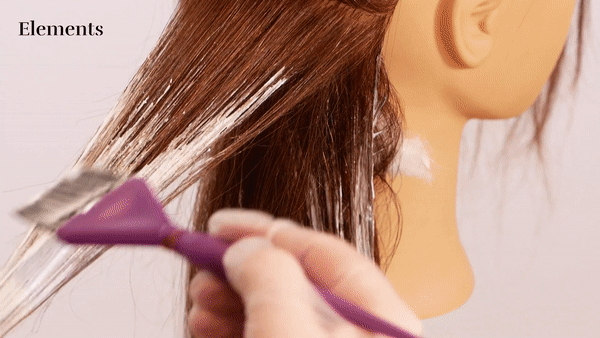The Art of Balayage
Balayage has transformed the landscape of hair colouring, offering a natural and sophisticated alternative to traditional methods. Let's dive into the world of balayage, exploring its journey, current trends, and expert tips.
Balayage originated in France in the early 1970s, more specifically the Carita Salon in Paris. The term "balayage" means "to sweep" or "to paint," reflecting the freehand technique used to apply colour. Unlike traditional methods that rely on foils or caps, balayage creates a more natural, sun-kissed look by mimicking how hair naturally lightens over time.
Balayage continues to evolve, with new trends emerging regularly. Here are some of the latest styles:
Soft Babylights - Ultra-fine highlights that blend seamlessly with the natural hair colour for a barely-there effect.
Reverse Balayage - Adding darker tones to lighter hair for added depth and dimension.
Face-Framing Highlights - Lighter pieces around the face to enhance features and create a youthful glow.
Colour Melting - A technique that blends multiple shades to achieve a smooth, gradient transition.
Pastel Balayage - Incorporating soft pastel hues for a whimsical, trendy look.
Balayage offers numerous benefits that make it a favourite among clients and hairdressers alike:
Low Maintenance - The natural growth pattern means clients can go longer between touch-ups.
Customisable - Each balayage is tailored to the client's hair type, colour, and style preferences.
Versatile - Suitable for all hair types, lengths, and colours, making it a versatile technique.
Natural Look - Provides a sun-kissed, seamless appearance that mimics natural hair lightening.
Do's and Don'ts of Balayage
Do's:
Consult Thoroughly: Spend time understanding your client's hair history and desired outcome.
Use Quality Tools: Invest in high-quality brushes, balayage boards, and lighteners.
Practice Patience: Take your time with the application to ensure even, natural results.
Stay Educated: Keep up with trends and techniques through continuous education and training.
Don'ts:
Avoid Over-Saturation: Applying too much product can lead to harsh lines and an unnatural look.
Skip the Toner: Neglecting to tone can result in brassiness or uneven color.
Forget Aftercare Advice: Clients need guidance on maintaining their balayage between salon visits.
Ignore Hair Health: Always prioritize the health of your client's hair, using bond protectors and conditioning treatments as needed.
Even seasoned professionals can encounter challenges with balayage. Here are some common issues and solutions:
Brassiness: Ensure proper lifting and use of toners to neutralize unwanted warm tones. Purple shampoos can also help maintain cool hues.
Patchiness: Consistent application and feathering techniques are crucial. Practice on mannequins to perfect your method.
Over-Processing: Monitor processing times carefully and use bond protectors to minimize damage. If over-processed, recommend restorative treatments.
As balayage continues to captivate clients, its techniques and trends will keep evolving. Innovations in hair care products and colouring methods will offer new opportunities for creativity and customization. Staying ahead of the curve by embracing these advancements will ensure your skills remain in high demand.
Balayage is more than a colouring technique; it's an art form that blends skill, creativity, and a deep understanding of hair. By mastering the history, trends, and best practices of balayage, you can provide your clients with stunning, personalized results that enhance their natural beauty. Keep exploring, learning, and perfecting your craft to remain a sought-after balayage expert in the ever-changing world of hairdressing. We have a range of masterclasses on different balayage techniques, if you want to learn more check out our colouring masterclasses here.





